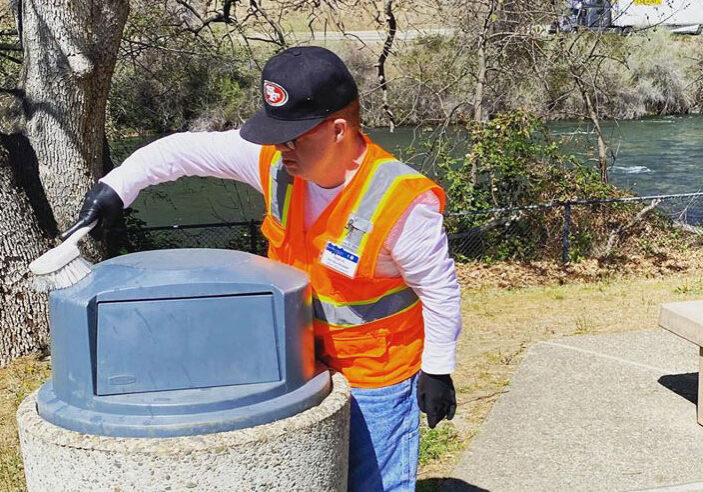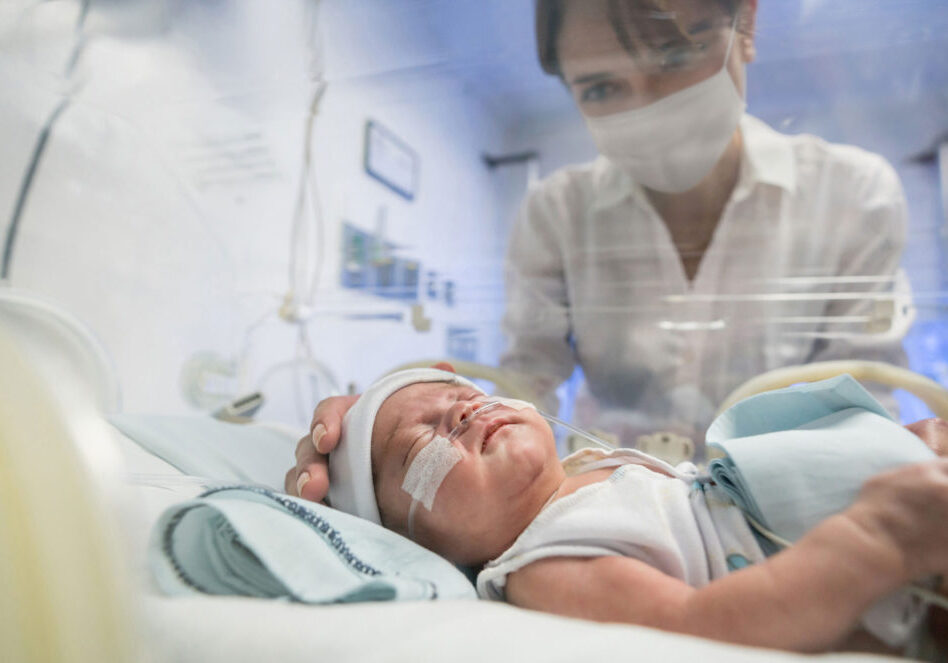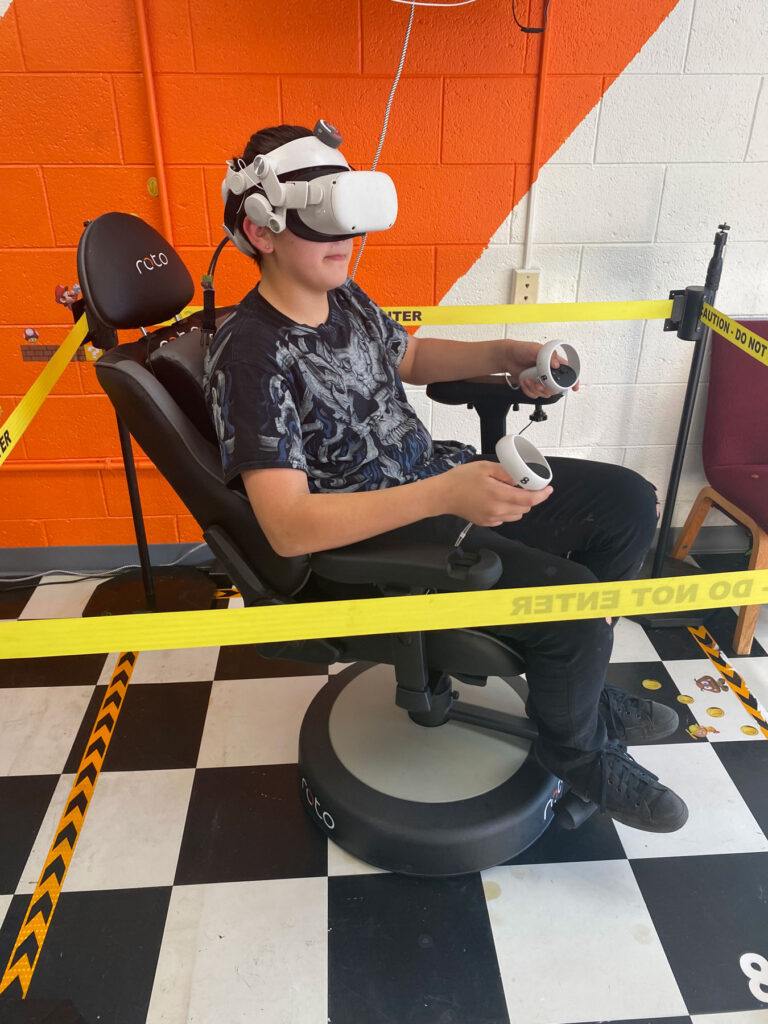
Katherine’s son, Austin, demonstrates the use of the chair.
Virtual Reality (VR) is an immersive technology that provides a simulated experience and allows people to interact with a 3D computer-generated environment in a way that mimics real life. VR users can explore digital landscapes, interact with virtual objects, or perform certain actions just as one would in the physical world.
There are a few virtual reality spots sprinkled around the North State, but Nano VR Escape in Shasta County offers a truly inclusive experience where kids and adults of all abilities can explore the world of virtual reality.
Accessibility with innovative and customizable equipment
Nano VR Escape has a wide variety of popular games and specialized equipment that makes the VR experiences accessible to individuals with disabilities.
For example, the Roto interactive 360° R chair provides users with physical support while they play, giving the user a full view of the VR environment without requiring them to physically turn or move; and it provides tactile feedback to simulate movements. The chair is customizable, and there are plans to add a five-point harness and other modifications to support people with low muscle tone, and also possibly a voice command accessory.
Care for Disabled Clients and a Love of Gaming Turns into a Family-Run Business
Owner Katherine Nerbonne says opening a VR place was a family decision and an easy one, as she comes from a family of avid gamers. She has a background as a certified nursing assistant and has provided care to clients who were physically disabled yet were “mentally aware”. She saw great potential for offering virtual reality rehabilitative services to disabled individuals in the community. Her goal with Nano VR is “to bridge that gap between what they believe they’re able to do and what they can truly do in the real world.”
Virtual Reality is a Safe Environment to Learn New Skills
VR technology can be a powerful tool for individuals with special needs, offering a safe and controlled environment for learning and practicing new skills such as communication and social interaction, and gradual exposure to situations that can cause anxiety.
Virtual reality experiences such as a roller coaster can help people with autism or sensory processing disorder become more comfortable and familiar with sudden movements and intense sensations. Katherine explains that for many disabled people, going on a real roller coaster isn’t an option because if they experience a meltdown, “it’s not realistic to have to stop the ride or even force them to finish it.” The VR version allows them to get the same thrill in a safe environment they control, and possibly even build a tolerance for the real thing.
Katherine talks about the joy that virtual reality experiences can bring to children who are otherwise limited in the activities in which they can engage. She described one young girl who had a strong desire to play tennis but had never been able to because of limited functioning in her hands. With the equipment at Nano VR, she could experience swinging a tennis racket.
Kids and adults with limited mobility and muscle tone get “so excited” when they get into the interactive VR chair and can explore the virtual world and play games. Katherine says that VR allows users to “go rock climbing, skydiving, or other things that may be unreasonable for them to do physically.”
A Fun and Interactive Learning Environment
Along with the six VR bays, there is also a party room in the back. It is a sensory-friendly space where lights are kept low, and everything is tactile, offering a kinesthetic learning experience.
For many kids, regardless of ability, a typical classroom environment isn’t always conducive to learning. Many kids with ADHD are kinesthetic learners, meaning movement is crucial to retaining information. VR can provide this type of learning environment, making it fun and interactive.
When kids are playing a game at Nano VR that involves throwing darts, Katherine explains, “When they hit a dart on an even number, they will lose points,” so they are learning math concepts whether they realize it or not.
Katherine plans to eventually expand Nano VR Escape to Lassen. She is already a vendor with several large school districts in Shasta County and is obtaining vendors status with Far Northern Regional Center. Doing this would allow clients to work VR into care plans and goals. For example, if a client has a fear of heights, many VR games and experiences allow them “to gradually increase the heights they are exposed to,” Katherine explains.
Information about rental prices for VR bays and equipment and the party packages can be found on the Nano VR Escape website. You can also call and inquire about income-based memberships.
Posted in: Uniquely Us
Comment Policy: All viewpoints are welcome, but comments should remain relevant. Personal attacks, profanity, and aggressive behavior are not allowed. No spam, advertising, or promoting of products/services. Please, only use your real name and limit the amount of links submitted in your comment.
You Might Also Like...

Halloween Tips for Families of Children with Diverse Abilities
Although Halloween can be a fun time for kids of all abilities, it often can be overwhelming for children with special needs. They may have trouble with the loud noises, […]
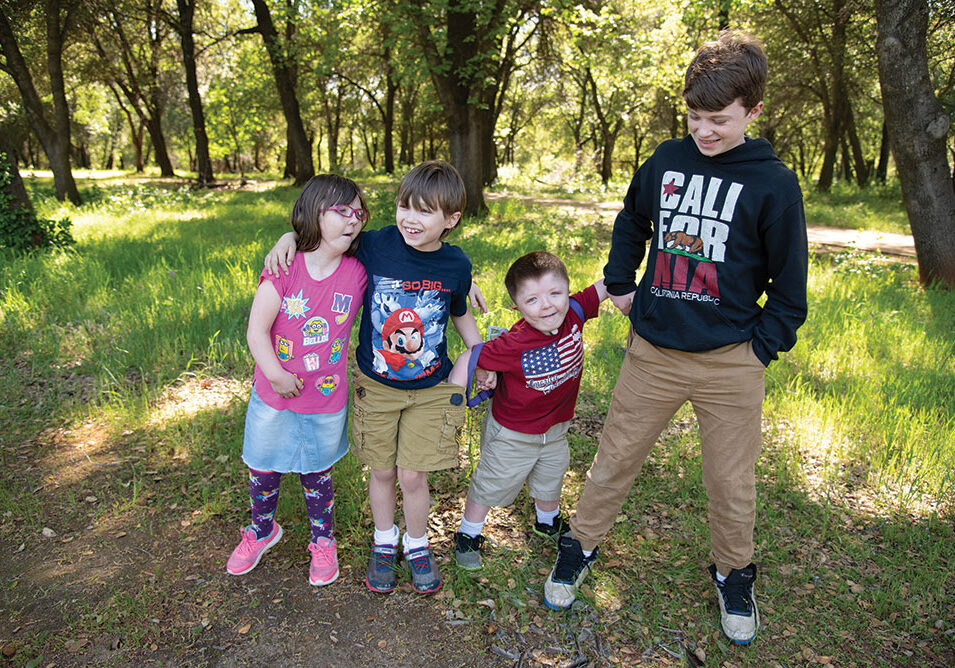
Eloping and Autism – Uniquely Us
The Other Eloping … There is a term that many parents of special needs children are familiar with. It means to wander off, bolt, escape, or run away. This behavior […]

4 Things Parents of Special Needs Children Don’t Love Hearing – Uniquely Us
As most parents of a child with special needs know, other people often have a desire to comment to us about our children, or our parenting. Family, friends, and even […]
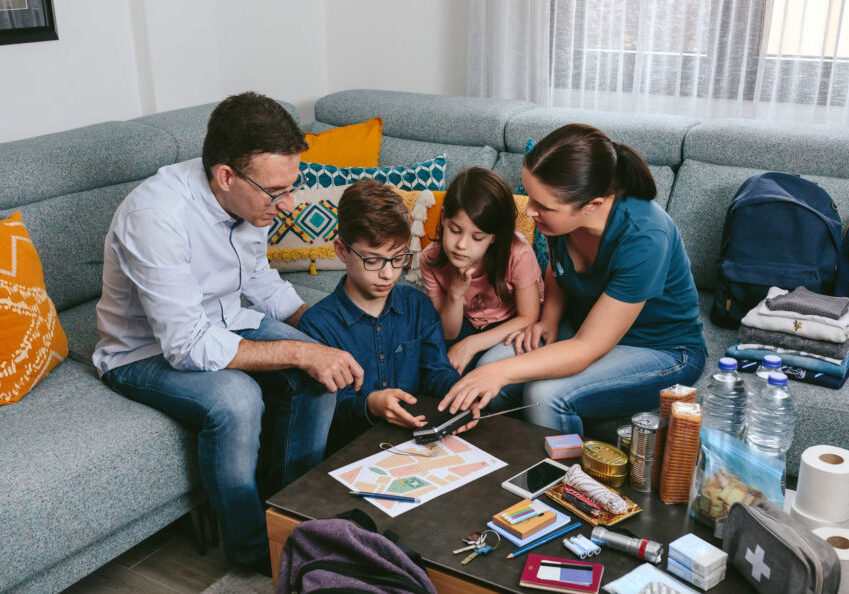
Preparing for an Emergency When You Have a Medically Fragile Child
With raging wildfires, power outages, and widespread cases of COVID-19, the North State has been in crisis mode for the last several months. As parents of a medically fragile child, […]



